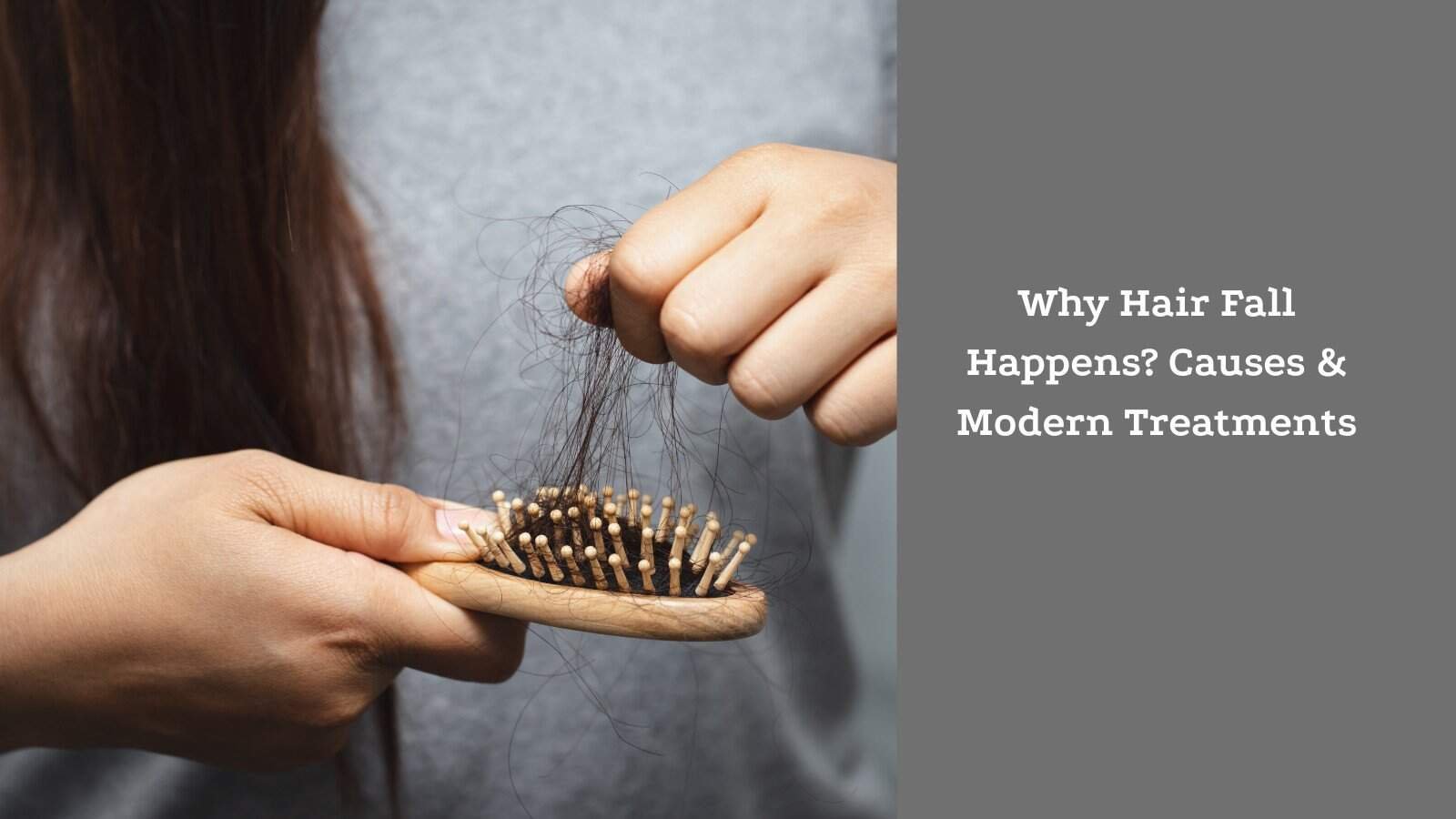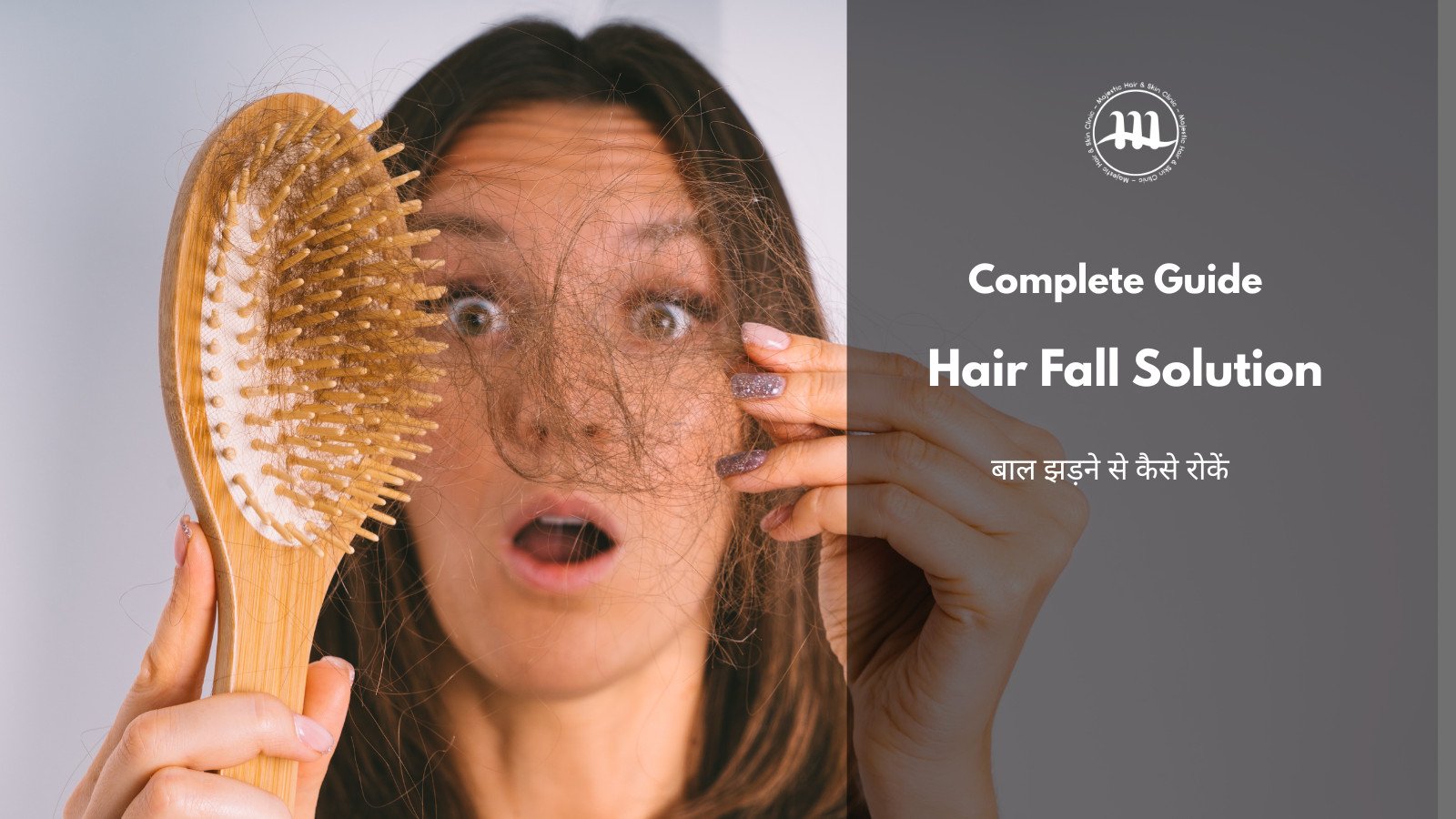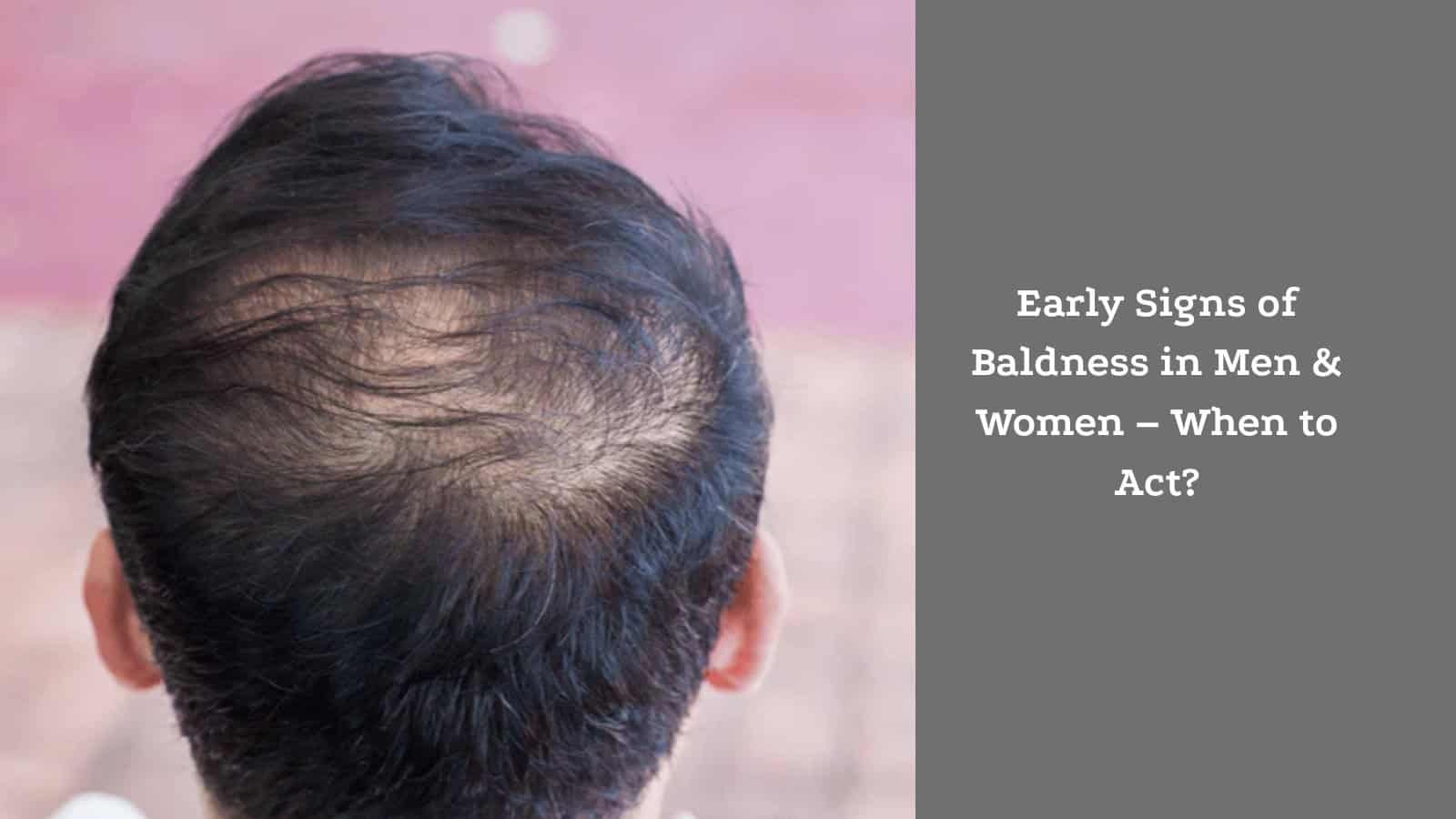Hair loss and thinning are common concerns affecting both men and women, impacting confidence and overall well-being. While occasional shedding is normal, persistent hair loss thinning can signal underlying issues such as genetics, hormonal changes, or lifestyle factors. Understanding the causes is essential for choosing the right treatment and preventing further progression. Modern, FDA-approved treatments like Minoxidil and Finasteride offer evidence-based solutions to slow hair loss, stimulate regrowth, and improve scalp health. Recognizing the problem early and taking informed action ensures better results and long-term hair preservation.
Why Hair Fall Happens: Causes
Understanding the causes of hair thinning and loss is key to addressing the problem effectively. Many people ask, “Why is my hair falling out?” and the reasons can differ between men and women.
Genetic Factors:
- Male pattern baldness (androgenetic alopecia): A hereditary condition causing gradual thinning, receding hairlines, and crown balding in men.
- Female pattern hair loss: Women may experience diffuse thinning, especially along the parting, often due to genetics and hormonal influences.
Hormonal & Age-Related Factors:
Hormonal imbalances, thyroid issues, and aging can weaken hair follicles and accelerate shedding.
Environmental & Lifestyle Factors:
Poor nutrition, stress, excessive heat styling, and certain medications can contribute to hair fall.
Identifying the reason of hair fall in female or the reason for hair fall in male allows for targeted, effective interventions. Early recognition enables the use of FDA-approved treatments and lifestyle adjustments to reduce shedding and support healthy hair growth.
Medical Conditions & Hormonal Factors
Hair loss can often be linked to underlying medical conditions and hormonal changes, which are key causes of hair thinning and loss in both men and women.
Common Medical Conditions:
- Thyroid Imbalance: Both hypothyroidism and hyperthyroidism can disrupt hair follicle growth, leading to diffuse thinning.
- Anemia: Low iron levels reduce oxygen supply to hair follicles, causing shedding and brittle hair.
- PCOS (Polycystic Ovary Syndrome): Hormonal fluctuations in women can trigger hair thinning along the scalp.
Hormonal & Stress-Related Factors:
Chronic stress can induce telogen effluvium, a temporary hair shedding condition. Hormonal changes during pregnancy, menopause, or puberty may also contribute to hair loss.
Addressing the underlying cause is essential. In many cases, FDA-approved treatments like Minoxidil can complement medical management by stimulating follicle activity and promoting regrowth, while lifestyle and nutritional interventions support long-term hair health.
Nutritional Deficiencies & Lifestyle Factors
Hair growth and strength are closely tied to nutrition and lifestyle. Poor diet, vitamin deficiencies, and unhealthy habits are major contributors to hair loss thinning. Understanding how to prevent hair fall starts with addressing these factors.
Key Nutrients for Hair Health:
- Protein: Essential for building keratin, the main component of hair.
- Iron: Low iron can lead to follicle weakening and increased shedding.
- Zinc: Supports hair follicle growth and repair.
- Vitamin D: Plays a role in the hair growth cycle, with deficiencies linked to thinning.
Lifestyle Factors:
Stress, inadequate sleep, smoking, and excessive heat styling can all exacerbate hair loss.
Combining nutritional support with evidence-based, FDA-approved treatments like Minoxidil helps maintain existing hair and stimulates regrowth. A balanced diet, healthy habits, and early intervention form a comprehensive strategy to strengthen hair and reduce thinning over time.
How to Stop Hair Fall Immediately
If you’re wondering how to stop hair fall immediately, combining topical treatments with healthy lifestyle habits can make a noticeable difference.
Topical Treatments:
- Minoxidil: An FDA-approved solution that stimulates hair follicles and reduces shedding. Apply consistently as directed by your dermatologist for best results.
Lifestyle Changes:
- Maintain a balanced diet rich in protein, iron, zinc, and vitamins.
- Reduce stress through meditation, exercise, or relaxation techniques.
- Avoid harsh hair practices, like excessive heat styling or tight hairstyles.
- Ensure adequate sleep and hydration to support hair health.
Consistency is Key: Hair regrowth and reduction in shedding require patience and regular application of treatments. Always consult a board-certified dermatologist before starting any hair loss regimen. Early intervention and adherence to evidence-based strategies maximize the chances of maintaining healthier, fuller hair.
Modern Treatments for Hair Loss
Dealing with hair loss thinning can be challenging, but modern, evidence-based treatments offer effective solutions for both men and women. Understanding hair loss options helps in choosing the best approach for your needs.
1. Minoxidil (Topical):
- How it works: Stimulates hair follicles to promote growth and increase density.
- Who can use it: Men and women experiencing early thinning.
- Expected results: Reduced shedding and visible regrowth within 3–6 months of consistent use.
2. Finasteride (Oral, Men Only):
- How it works: Blocks DHT, the hormone responsible for male pattern baldness.
- Expected results: Slows hair loss and may restore some lost hair; requires ongoing use.
3. PRP (Platelet-Rich Plasma) Therapy:
- How it works: Uses your own blood plasma injected into the scalp to stimulate follicles.
- Expected results: Improved hair density and thickness over several sessions.
4. Low-Level Laser Therapy (LLLT):
- How it works: Light energy stimulates cellular activity in hair follicles.
- Expected results: Thicker, healthier hair when used consistently.
5. Hair Transplant:
- How it works: Relocates hair from donor areas to thinning or bald regions.
- Expected results: Permanent, natural-looking restoration, best for stable hair loss.
Combining lifestyle adjustments with FDA-approved treatments ensures optimal outcomes. Consulting a qualified dermatologist or hair restoration specialist helps select the most effective solution for your stage of hair thinning.
Preventive Measures & Daily Hair Care
Preventing hair loss thinning starts with adopting consistent daily habits. Knowing how to prevent hair fall can complement FDA-approved treatments and maintain healthy hair.
Hair Care Routine:
- Use a gentle shampoo and conditioner suited for your hair type.
- Avoid excessive heat styling, harsh chemicals, and tight hairstyles that strain follicles.
- Regular scalp massages improve blood circulation, supporting follicle health.
Stress Management:
- Chronic stress can trigger hair shedding; practice meditation, yoga, or regular exercise.
- Adequate sleep and relaxation techniques help regulate hormones that impact hair growth.
Nutrition & Lifestyle:
- Include protein-rich foods, iron, zinc, and vitamins like D and B-complex to strengthen hair.
- Stay hydrated and maintain a balanced diet to support overall scalp and hair health.
By combining these evidence-based strategies with treatments like Minoxidil, Finasteride, or PRP therapy, you can slow hair thinning, reduce shedding, and support long-term hair growth. Daily care and early action make a significant difference in preserving healthy, fuller hair.
Restore Your Hair Confidence with Majestic Derma, Delhi
Are you struggling with hair thinning, bald patches, or excessive hair fall? At Majestic Derma, Delhi, we offer advanced and personalized hair restoration treatments designed to bring back your natural hair density and confidence.
Our Specialized Hair Treatments Include:
- Hair Transplant (FUE & FUT) – Get permanent and natural-looking results with advanced follicular techniques performed by expert trichologists.
- Hair Patch / Non-Surgical Hair Replacement – Instant volume and coverage for bald areas without surgery, pain, or downtime.
- PRP Hair Treatment – A safe, natural, and effective therapy that uses your own platelets to stimulate hair regrowth.
- GFC Hair Treatment – The latest regenerative therapy using Growth Factor Concentrate (GFC) to strengthen hair roots and promote new growth.
Whether your concern is genetic hair loss, post-pregnancy hair fall, or stress-related thinning, our dermatology experts design a treatment plan that delivers visible, lasting results.
📍 Location: Majestic Derma Clinic, Delhi NCR
📞 Book a Consultation: https://majesticderma.com/
Conclusion
Understanding hair loss and the causes of hair thinning and loss is the first step toward maintaining healthy hair. Early recognition of thinning, combined with timely intervention, significantly improves outcomes. FDA-approved treatments like Minoxidil, Finasteride, PRP, and low-level laser therapy are most effective when paired with lifestyle adjustments and proper hair care. Consulting a board-certified dermatologist ensures a personalized plan tailored to your needs. Start taking preventive measures today—protect your hair, reduce shedding, and support long-term growth for stronger, fuller hair.





